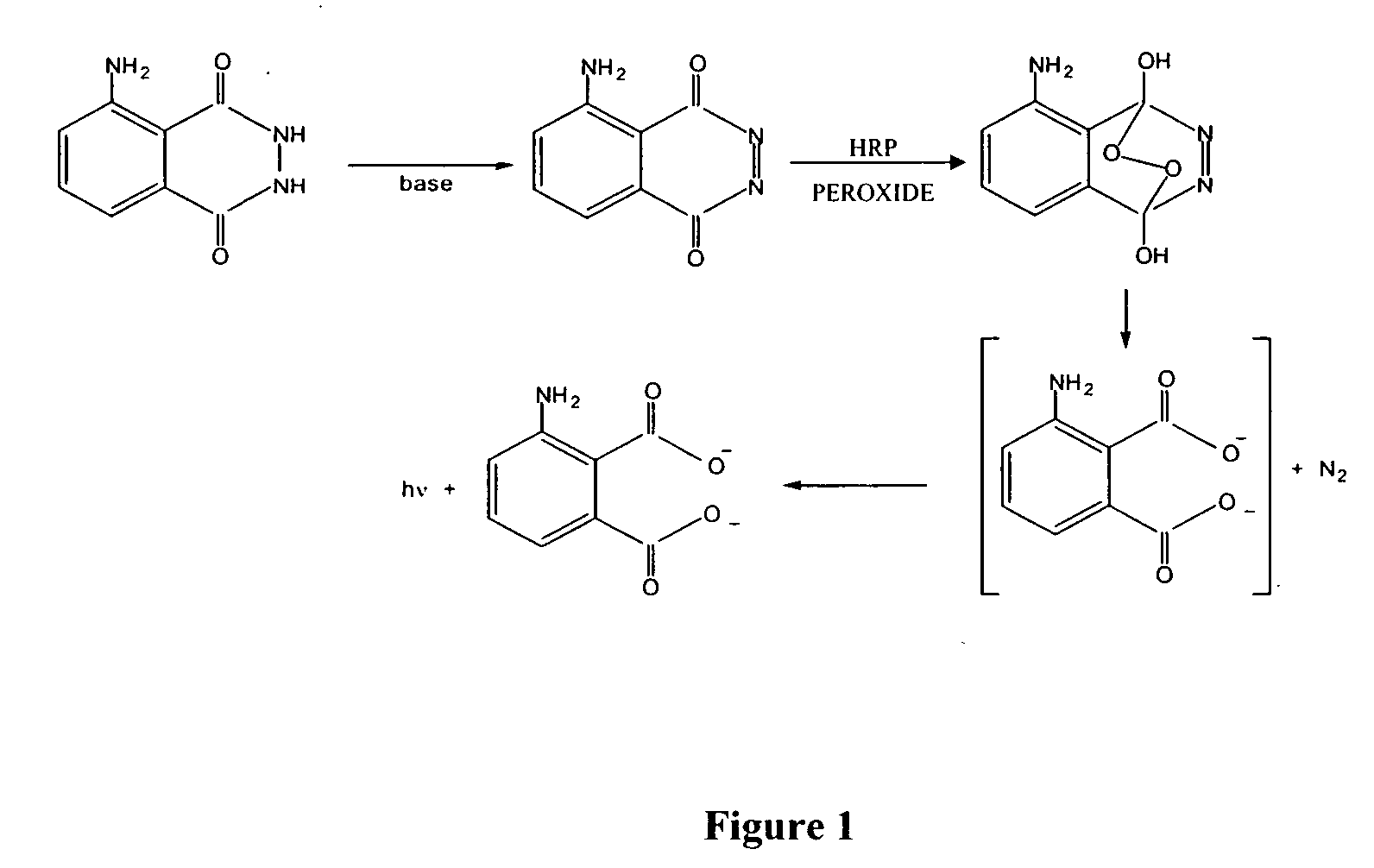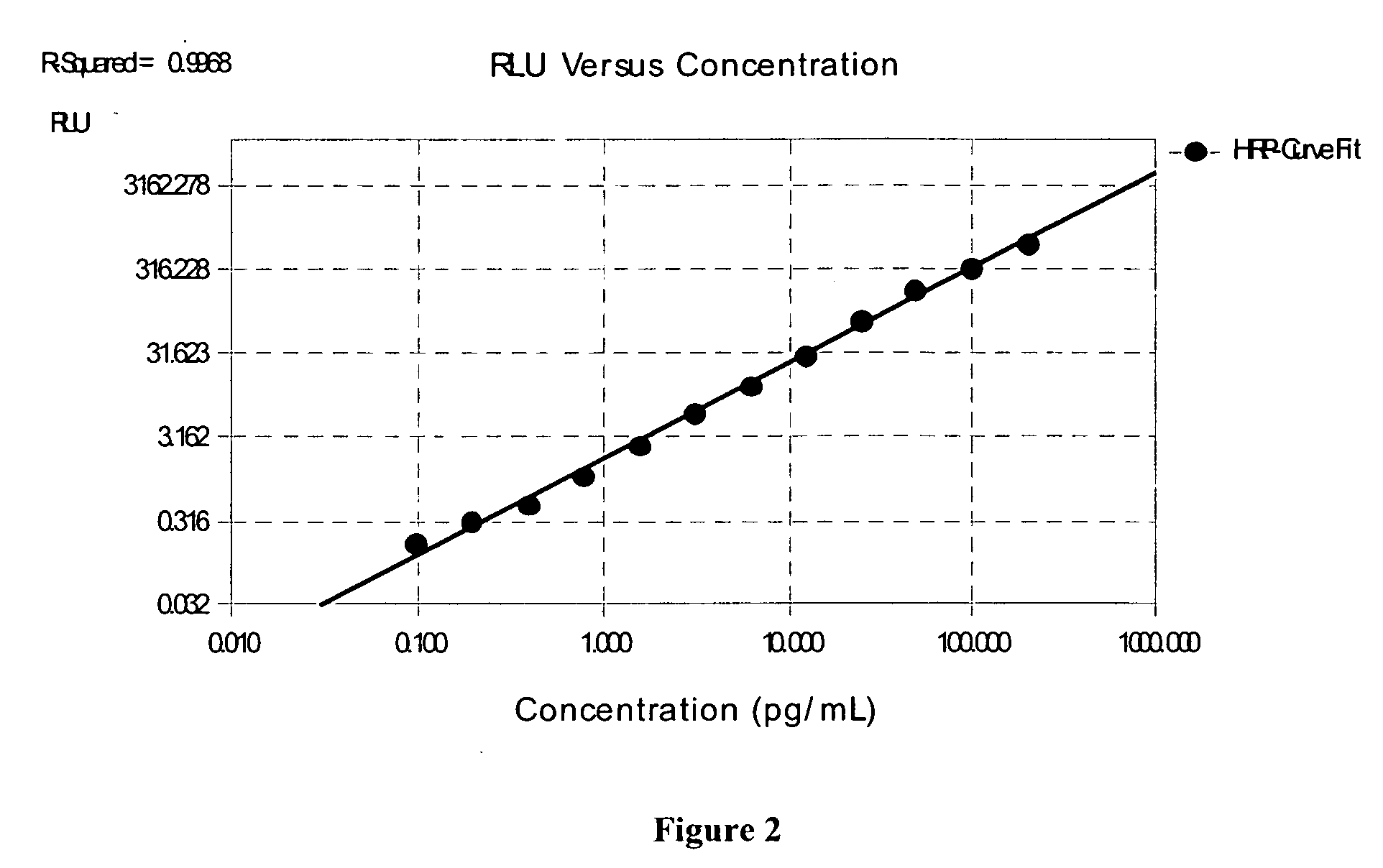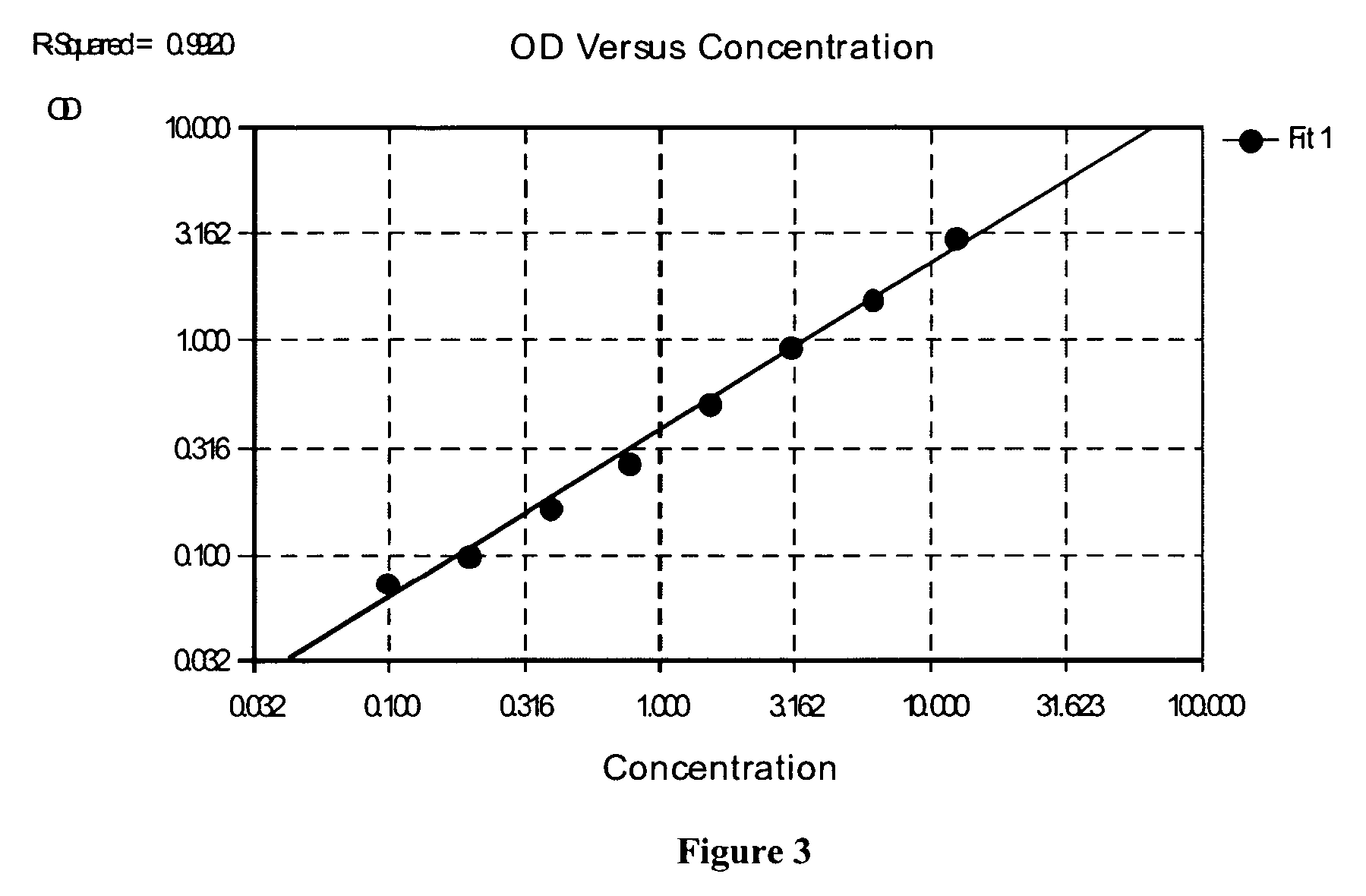Stabilized two component system for chemiluminescent assay in immunodiagnostics
a chemiluminescent assay and two-component technology, applied in the field of compositions comprising stabilized two-component chemiluminescent assays, can solve the problems of short assay shelf life and disposal problems, user-unfriendly and unsafe,
- Summary
- Abstract
- Description
- Claims
- Application Information
AI Technical Summary
Benefits of technology
Problems solved by technology
Method used
Image
Examples
example 1
Reagents
[0031] The substrate solution is a two-component system. Component A comprises a buffered solution containing diacylhydrazide derivatives, an enhancer, and at least one homogenizing agent. Substrate B comprises a solution containing at least one stabilized peroxide derivative.
To Prepare Component A:
example 1 a
[0032] To A 100 ml solution of borate buffer at pH 8.55, 0.1% BSA was added in a light-sensitive container. 2.4 mM of 3-aminophthalazide was added to the buffer, followed by the addition of 1.2 mM of p-iodophenol solution in DMSO to the buffer. Then the solution was stirred and filtered through a 0.2 μm filter and stored at 2-8° C.
example 1 b
[0033] To A 100 ml solution of borate buffer at pH 8.52, 0.1% PVA was added in a light-sensitive container. 1 mM of 3-aminophthalazide was added to the buffer, followed by the addition of 0.5 mM of p-iodophenol solution in DMSO to the buffer. Then the solution was stirred and filtered through a 0.2 μm filter and stored at 2-8° C.
PUM
| Property | Measurement | Unit |
|---|---|---|
| temperature | aaaaa | aaaaa |
| pH | aaaaa | aaaaa |
| pH | aaaaa | aaaaa |
Abstract
Description
Claims
Application Information
 Login to View More
Login to View More - R&D
- Intellectual Property
- Life Sciences
- Materials
- Tech Scout
- Unparalleled Data Quality
- Higher Quality Content
- 60% Fewer Hallucinations
Browse by: Latest US Patents, China's latest patents, Technical Efficacy Thesaurus, Application Domain, Technology Topic, Popular Technical Reports.
© 2025 PatSnap. All rights reserved.Legal|Privacy policy|Modern Slavery Act Transparency Statement|Sitemap|About US| Contact US: help@patsnap.com



